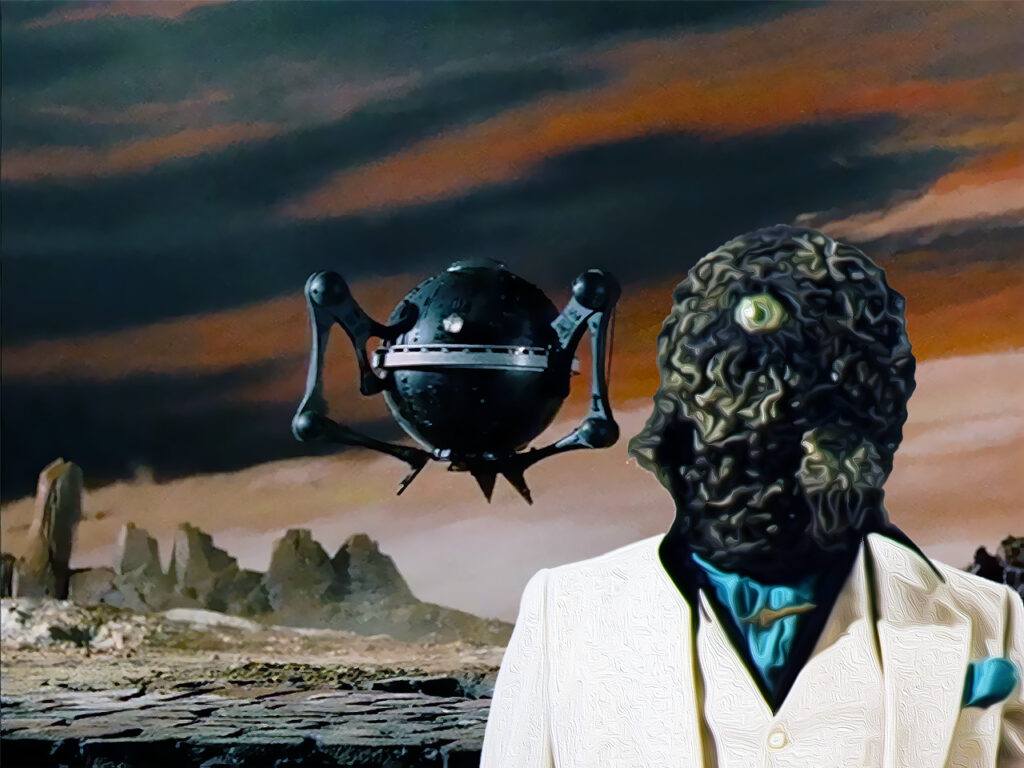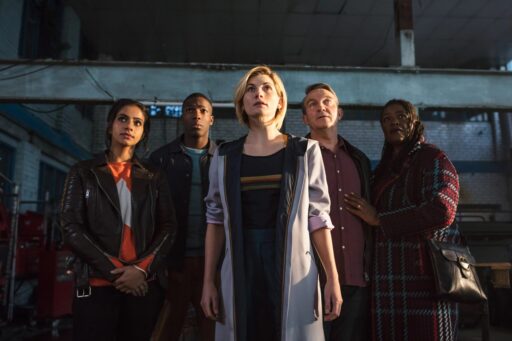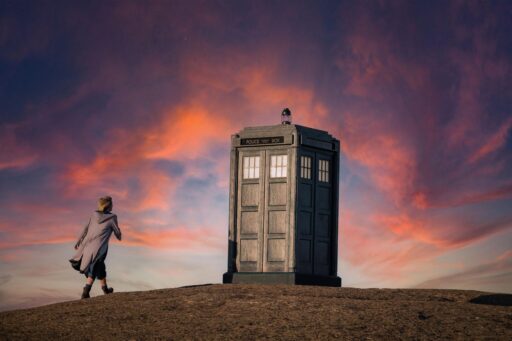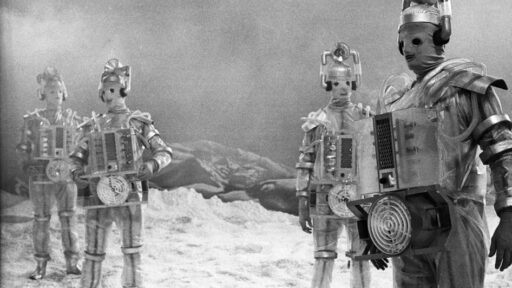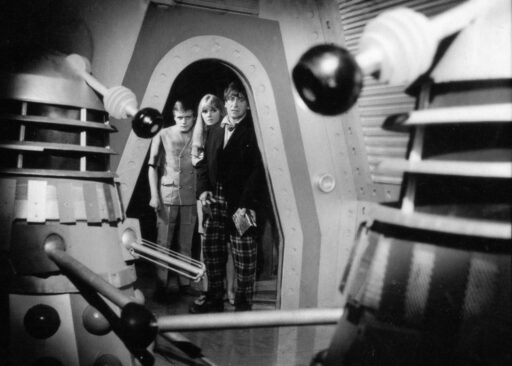For the majority of its running time there is remarkably little death in City of Death, that does leave me wondering if there’s a deeper meaning I missed or they just thought it was a cool title. There is some eventually, but for the majority of its running time this is more of a comedy of manners than anything else. City of Death has something of a reputation amongst Doctor Who fans. One of its episodes holds the highest audience ever for an episode of the show although frankly, it’s a meaningless boast as the ratings were artificially boosted by an ITV strike, but more importantly it’s considered to be very, very good. It’s certainly one I have strong childhood memories of, but how does it stand up to a recent rewatch?
The opening scene has some good model work as we see the Jagaroth space ship explode. I mention this because it’s important to remember that courtesy of rampant inflation the shows budgets were even more pathetic than usual so the show frequently looked bad. This fed into a perception at the time that the show looked cheap and had become a joke. Here, despite the location shooting (first time out of the UK I believe), perhaps because it is so heavily Earth based, they did a great job. The episode may well be heavily comedic but I don’t think it is a joke.
We get a pretty good idea of what this story is going to feel like the moment the Fourth Doctor and Romana show up, standing at the top of the Eiffel Tower. The banter is witty and also very aware of how clever it’s being. Technically this episode is written by the fictitious David Agnew because it’s an amalgamation of three people’s work, but Adams’ influence is overwhelming and its right there in this early dialogue. The whole sequence about flying down rather than walking is wonderfully silly for example, although likely someone has turned that into a twenty page treatise on how Time Lords fly.

Apparently since this was the first time they’d got to shoot abroad they really wanted people to know it, which means there are a lot of sequences of various people running around Paris, most of which are entirely superfluous. The first episode suffers particularly badly from this with close to 5 minutes of people wandering around out of a 24 minute episode. The remaining episodes don’t suffer as much but it’s still there and it’s pretty egregious padding really, it’s not even very interesting to watch; just random streets in France. Padding is an inevitability with Classic Who and in part exists to stretch budgets, which as we’ve already discussed were particularly thin at this time.
One thing that is comparatively unusual about this story (though much less so for Douglas Adams) is that it’s a story where time and travel through time is integral to the plot. While that’s not completely unheard of in Classic Who, the majority of stories treat the TARDIS more as a vehicle to get to the place where the story will happen so this makes for a pleasant change of pace as well as the perfect hook to get the Doctor involved as he and Romana experience a Timequake. Interesting to note that the Doctor is more aware of it and attributes that to having travelled through time more. Whether it’s an innate Time Lord thing or related to travel probably depends on the story you are watching. Adams would, of course, happily return to this type of story first with the unbroadcast Shada and then later re-working that into his first Dirk Gently story.
Essentially by the end of the first part if you’ve ever watched a Doctor Who story before you know roughly how this is going to play out, except for one major twist. The reveal of Scaroth’s face is burned into my brain from watching it as a 7 year old. Yeah by modern standards the mask is not stunning, but it was creepy as hell to me at that age. While certainly the cliffhanger I remember best from this story, it’s not the best one which clearly is the cliffhanger from episode 2 where we discover that Captain Tancredi is also Count Scarlioni, how can this be possible? This is a clever story and you do have to pay some attention for the plot to make sense. It has the basic elements we expect from Who, but it is really more interested in other things.
Despite the Paris location shooting, I suspect that the budget for this episode was pretty small. It’s not a base under siege or bottle episode and yet the number of locations used is very low. They spend half their time in Scarlioni’s chateau either upstairs or in the laboratory, and multiple uses are made of the Louvre set and a café location. It does the job of making the story feel bigger than it really is.
The thing is, while I’m entertained by this story (walking around Paris scenes excepted), I feel no tension at any point. We’re firmly in the “Tom Baker Show” era where the Doctor has just become his personality and on top of that Adams propensity for not taking things seriously shows throughout. Fortunately Adams was very good at that which is why it’s so entertaining, but the casualty is any sense of actual threat. The Doctor and Scarlioni exchange quips and barbs that would make Oscar Wilde nod and Julian Glover oozes sophisticated smarm, but at no point does he actually feel dangerous to me. At the very least that’s an unusual approach for a sci-fi adventure show known for ending on cliffhangers.

Another example of this is Duggan who is demonstrated to not be dumb, he even figures out the significance of the 7 Mona Lisas, and yet for most of the time does dumb things because he’s an increasingly ridiculous stereotype of a hardboiled detective. It’s not bad writing, it’s entirely deliberate and an effective parody of the character type, but I can’t take him seriously and so I can’t take any threat to him seriously either. And then we get the random cameo by Eleanor Bron and John Cleese which, while funny, does nothing to move the plot forward, doesn’t relate to any themes in the episode and basically seems to exist because… had a funny idea.
In that way this feels far more like a Douglas Adams story to me than a Doctor Who story because there’s not much in the way of thrills or tension here. I’m not sure how much that actually matters because Adams was very good at the sort of humor he liked to write and also had a knack for taking complicated ideas and spinning them around in clever ways. If I seem a little wishy-washy it’s because I see what people like about the episode, but, in the end I like my Doctor Who a little more serious than this and I’d rather read Dirk Gently when I want this type of comedy.
Discover more from Veristopia
Subscribe to get the latest posts sent to your email.


